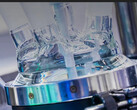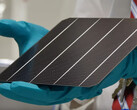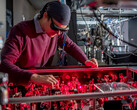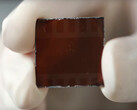Electricity from wind and sun can now be generated extremely cheaply. This also explains the rapid expansion of both energy sources, which still have something in common: the inconsistent yield, depending on the weather and season.
Even if the demand for electricity fluctuates greatly over the course of a day, it remains constant throughout the year. This cannot be said of either the sun or the wind. Solar cells, for example, supply hardly any significant amounts of electricity at high latitudes in the winter months.
This is compensated for somewhat by a higher yield from wind power over the winter, but a truly stable supply requires huge amounts of storage options to bridge several days of low wind and make the best possible use of the volatile energy yield from renewable sources.
Lithium-based batteries, lead-acid batteries and more are reliable electricity storage systems, but require complex construction. This results in high costs on a large scale.
Stanford University, California, has presented a different approach. Researchers have found an efficient way to convert surplus electricity directly into liquid fuel. Unsurprisingly, hydrogen is used, but in a completely different form than usual.
Instead of obtaining it through electrolysis, this step is bypassed. As promising as access to pure hydrogen is, storage and transportation are costly and inefficient.
Instead, a method has been developed to obtain it in bound form using electricity, then store it as a liquid and use it to generate electricity or as fuel when required. The existing infrastructure for transporting liquid gas and fossil fuels could be used for this purpose.
Isopropanol, also known as propan-2-ol, isopropyl alcohol, propol or persprit, consists of eight hydrogen atoms, one oxygen atom and three carbon atoms. This means that the mass proportion of hydrogen in the substance, which is liquid at room temperature, is 13 percent.
Until now, however, the direct extraction of isopropanol from water without taking the detour via pure hydrogen has been problematic. A much less complicated and more direct way had to be found.
Finally, the combination of the catalysts iridium and cobaltocene, a cobalt atom with two aromatic rings, was able to deliver the hoped-for success. This enables the production of large quantities of isopropanol in a highly efficient manner.
The amount of energy stored is certainly impressive: the pure hydrogen in one cubic meter of isopropanol is equivalent to 3,500 kilowatt hours of electricity. Enough for at least one household for one year in most countries of the world.




















